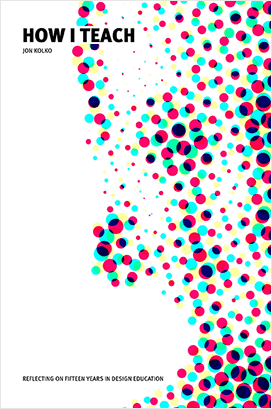This is from 2012 | 4 minute read
To Pursue Accreditation? An Overview of Oversight
In Texas, there exist (at least) three levels of educational regulation. Austin Center for Design is certified by the Texas Workforce Commission; they examine our faculty and policies, and ensure that we are actually teaching what we say we're teaching. They don't worry that much about the actual course content—they aren't experts in technology or design—and instead, they focus on policies and procedures. They're very supportive of the work we do. AC4D has a Certificate of Approval, which allows us to operate.
After establishing a two year track record of certification, an institution can apply to the Texas Higher Education Coordinating Board, and request a Certificate of Authority to Grant Degrees. To receive this Certificate of Authority, a program must comply with the 24 standards listed in the Coordinating Board's Rules and Regulations. These include things like:
- The chief academic officer shall hold an earned advanced degree appropriate for the mission of the institution, preferably, an earned doctorate
- There shall be a clear distinction in the roles and personnel of the chief business officer and the chief academic officer
- Each faculty member... shall have at least a master's degree
- ... graduate-level degree programs shall be taught by faculty holding doctorates
Clearly, pursuing this second level of regulation implies a more conservative and traditional approach to education. It's intended as a stepping stone towards the third level of regulation, accreditation. An accrediting body, like the Southern Association of Colleges and Schools, examines educational programs and then determines if the program should receive accreditation. They publish a document, called the Principles of Accreditation, which includes principles like:
- The institution has a governing board of at least five members
- The institution has developed an acceptable Quality Enhancement Plan (QEP) that includes an institutional process for identifying key issues emerging from institutional assessment and focuses on learning outcomes and/or the environment supporting student learning and accomplishing the mission of the institution
- The institution ensures the quality of educational programs and courses offered through consortial relationships or contractual agreements
At each stage of oversight, the rules get substantially more refined, and the requirements for a small school become increasingly difficult to adhere to. There are assumptions of multiple staff members, which suggests a large payroll. There are requirements of ongoing external audits, which cost several thousand dollars. The on-site accreditation visit requires fully funding visitors to the school for several days. There are reports to be filed and documents to be written, and so the process of education becomes one largely of administration.
What's the benefit of moving through these levels and going through these largely managerial motions? I see two main benefits to the school and students:
- Accreditation allows students to receive federal financial aid in order to attend.
- Accreditation allows students to transfer credits from and to the school.
I don't know if either of these would benefit the type of students that come to Austin Center for Design. Our tuition is extremely low, at $12,000 for the year. As a few reference points:
- UT Austin's Information school charges $6,706 per semester for 15-credit hours for in-state residents (and $12,697 for 15-credit hours for non-residents). That's $13,412 for the year for in-state, and $25,394 for out-of-state.
- SVA's program is $18,555 per semester, or $37,110 for the year (it's a two year program, so the total tuition is $74,220).
- IIT's program is $41,180 for the year (or $82,360 for the two year program - yikes!).
Because of the communal and extremely close working relationship our students and faculty establish, and because of the unique approach we're taking to education, I'm not sure it would make sense to transfer into the program. Someone might want to transfer out, and in this case, our lack of accreditation would hurt the student.
I think a lot about accreditation. I appreciate the signal it provides to the larger academic world: we are serious about education, and we value the integrity ensured by outside review. At the same time, the process demands a huge amount of resources, which can only result in higher operational costs—which inevitably get passed on to students. None of my faculty hold terminal degrees, nor do I, yet all of us are extremely qualified to teach. We change our curriculum based on the changing world around us, and the amount of external influence on what we teach would change considerably with accreditation.
I haven't heard of a single student that avoided AC4D because of a lack of accreditation. And our students are succeeding after they complete our program, both in running their own companies and in working at established companies and startups.The educational model of tomorrow may not need accreditation, if it is to truly embrace qualities of community and peer led learning.
Originally posted on Tue, 05 Jun 2012
